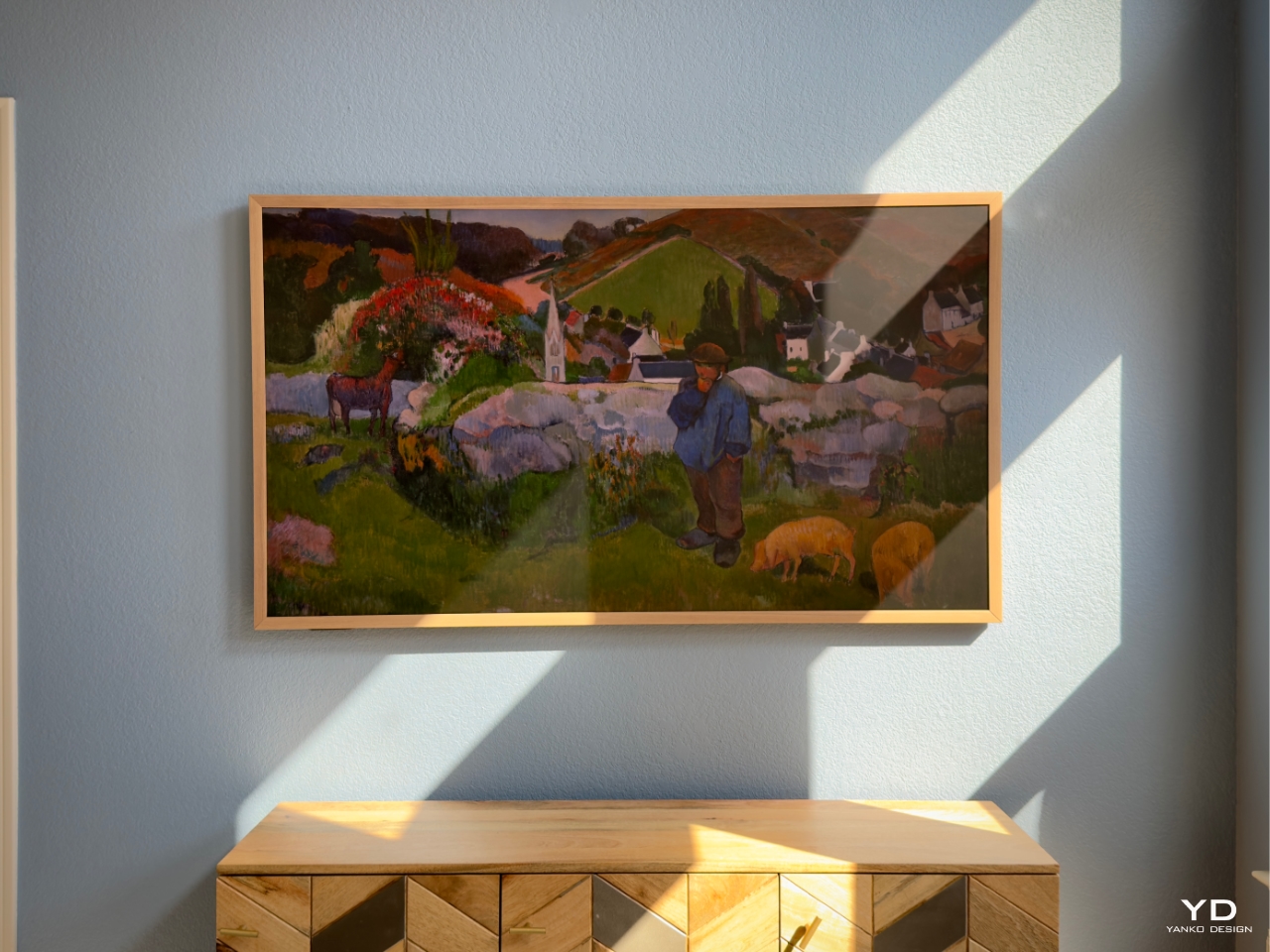
Finding the perfect balance between cutting-edge technology and home décor can feel like a never-ending quest. We didn’t just want another big screen; we wanted something to enhance our living space, not dominate it. Enter the Hisense CanvasTV, a television that promises performance and seamless integration into your home’s aesthetic.
PROS:
- Stunning Art Mode with over 120 free artworks included.
- Sleek, customizable frame blends seamlessly into any room.
- Versatile setup options—wall mount or mobile stand.
- Crisp, vibrant QLED display with 144Hz refresh rate for smooth viewing.
- Eco-friendly design with responsibly sourced materials and efficient power use.
CONS:
- Lacks Mini-LED backlighting, affecting black level depth.
- Art Mode requires manual activation through the remote, limiting automation.
Designer: Hisense
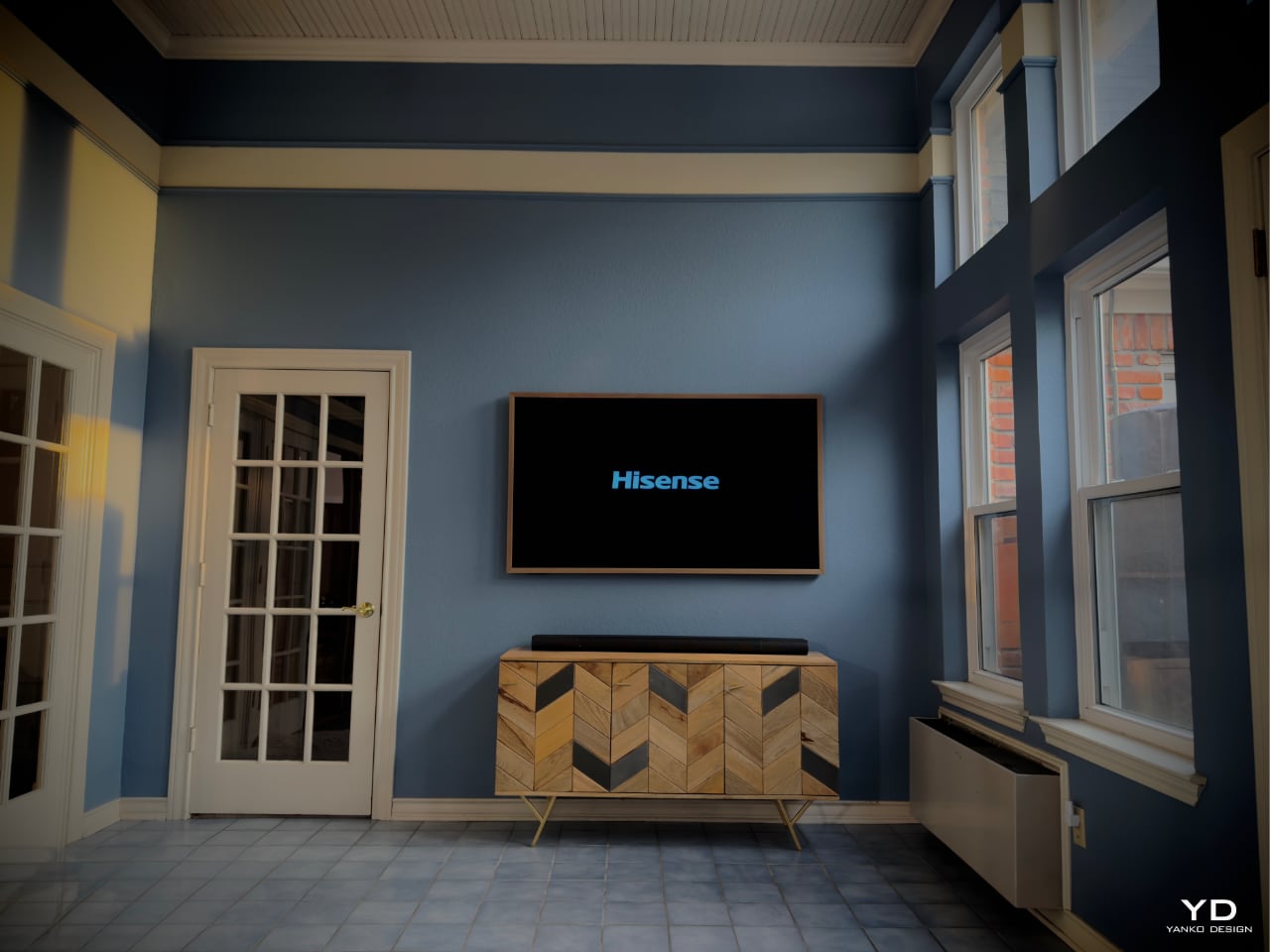
A Sunroom Makeover
Our journey began in our sunroom, a bright and airy space with an entire wall of windows that flood the room with natural light. For too long, this beautiful room was overshadowed—literally—by an outdated, bulky 85″ VIZIO TV that felt more like an eyesore than a centerpiece. It was high time for a change.
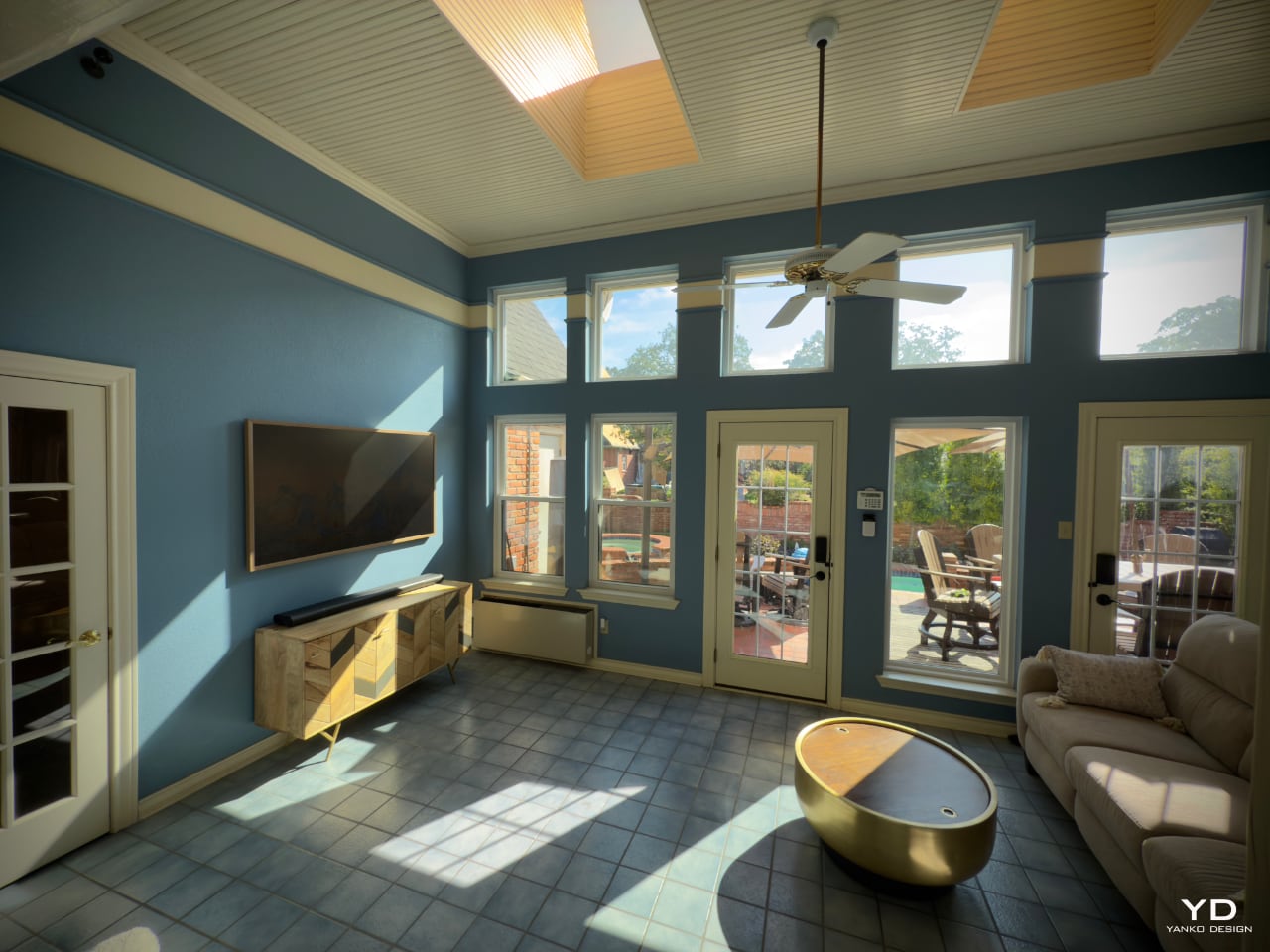
Swapping it out for the sleek 65″ Hisense CanvasTV was like lifting a veil. The room instantly felt more spacious and inviting. The TV’s slim profile and minimalist design complemented the room rather than competing with it. It wasn’t just about replacing a piece of hardware; it was about transforming the atmosphere of our home.
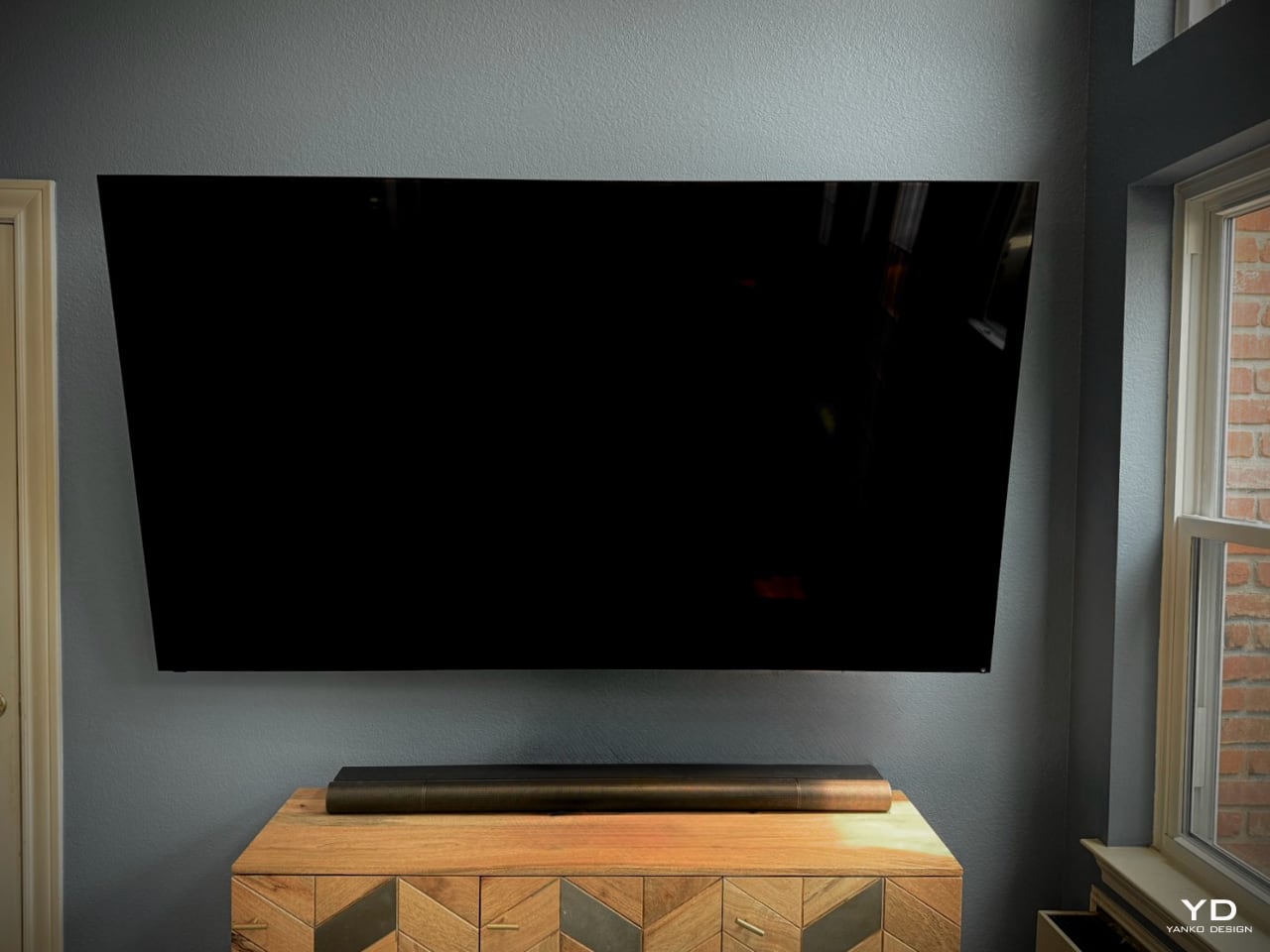
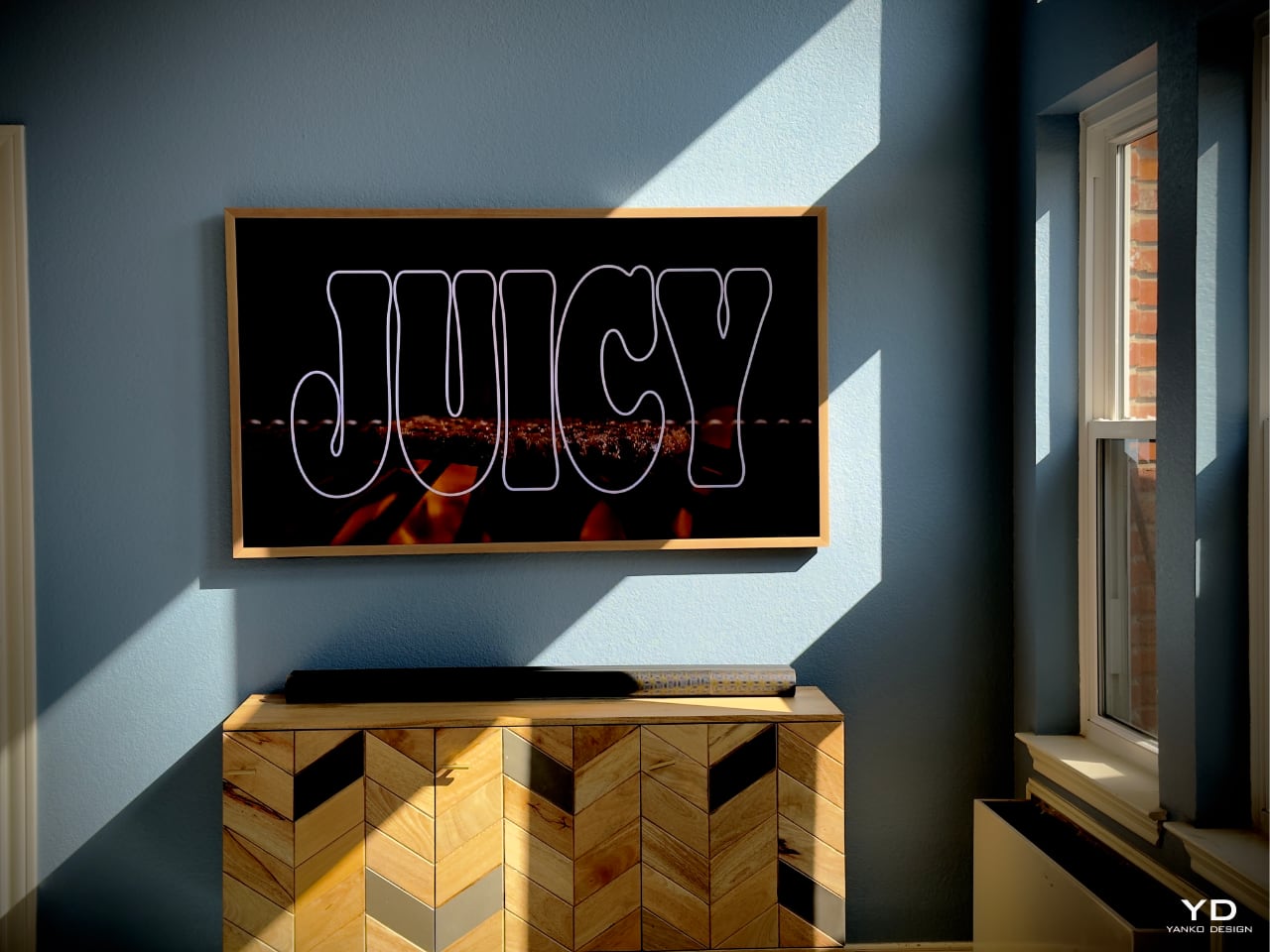
Art Mode: More Than Just a Screen
One of the features that drew us to CanvasTV is its Art Mode. Instead of staring at a blank, lifeless screen when the TV is off, we’re now greeted by a rotating gallery of stunning artworks or our own cherished photos. Setting it up was a breeze—intuitive controls let us switch between various curated collections or upload our own images without any hassle.
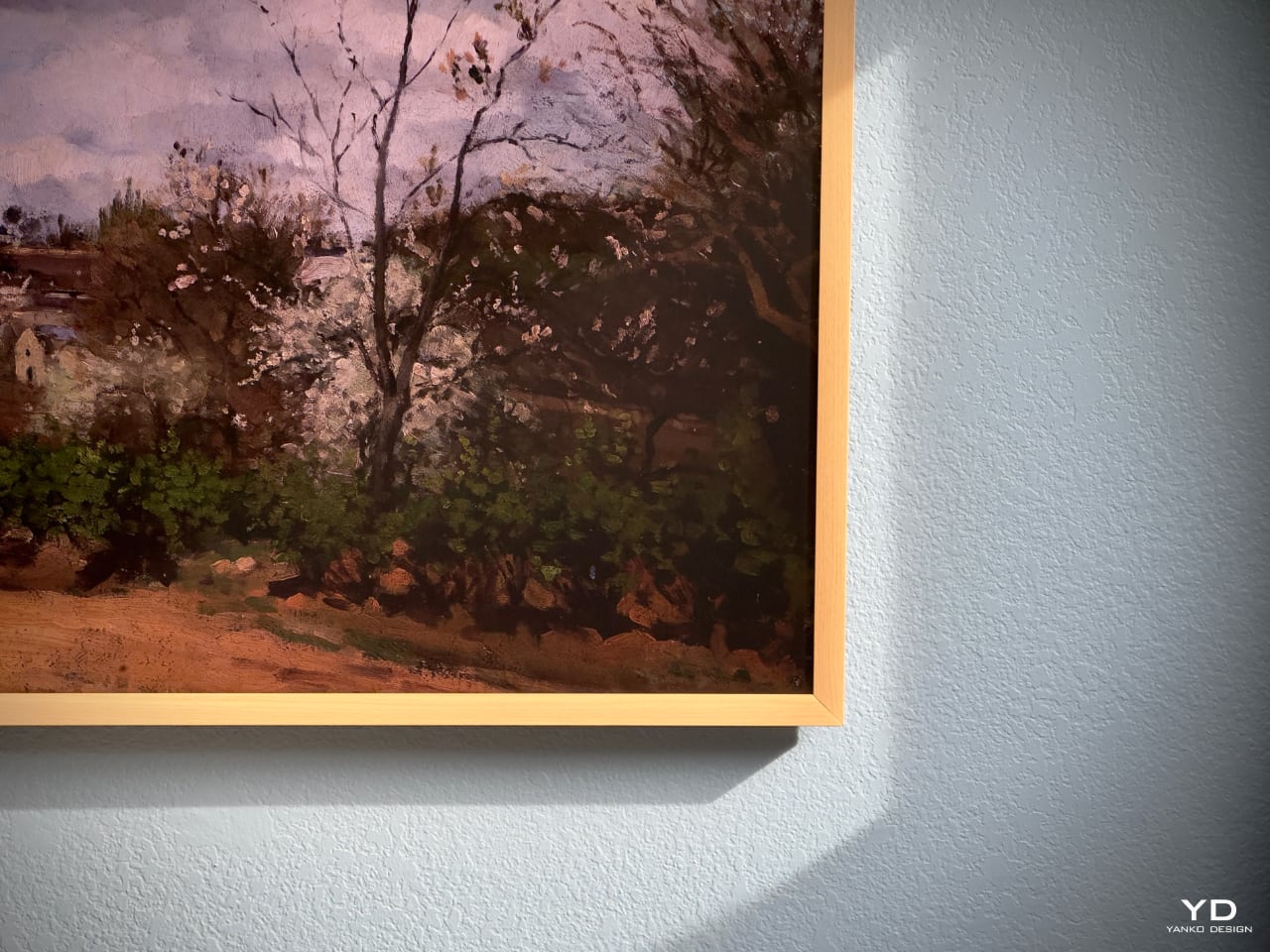
What impressed us most is that the TV comes pre-loaded with over 120 free art pieces across multiple categories, such as landscapes, still life, and modern art—no subscription fees required. This thoughtful feature transforms the TV from a mere electronic device into an artistic statement that enhances the ambiance of any room.
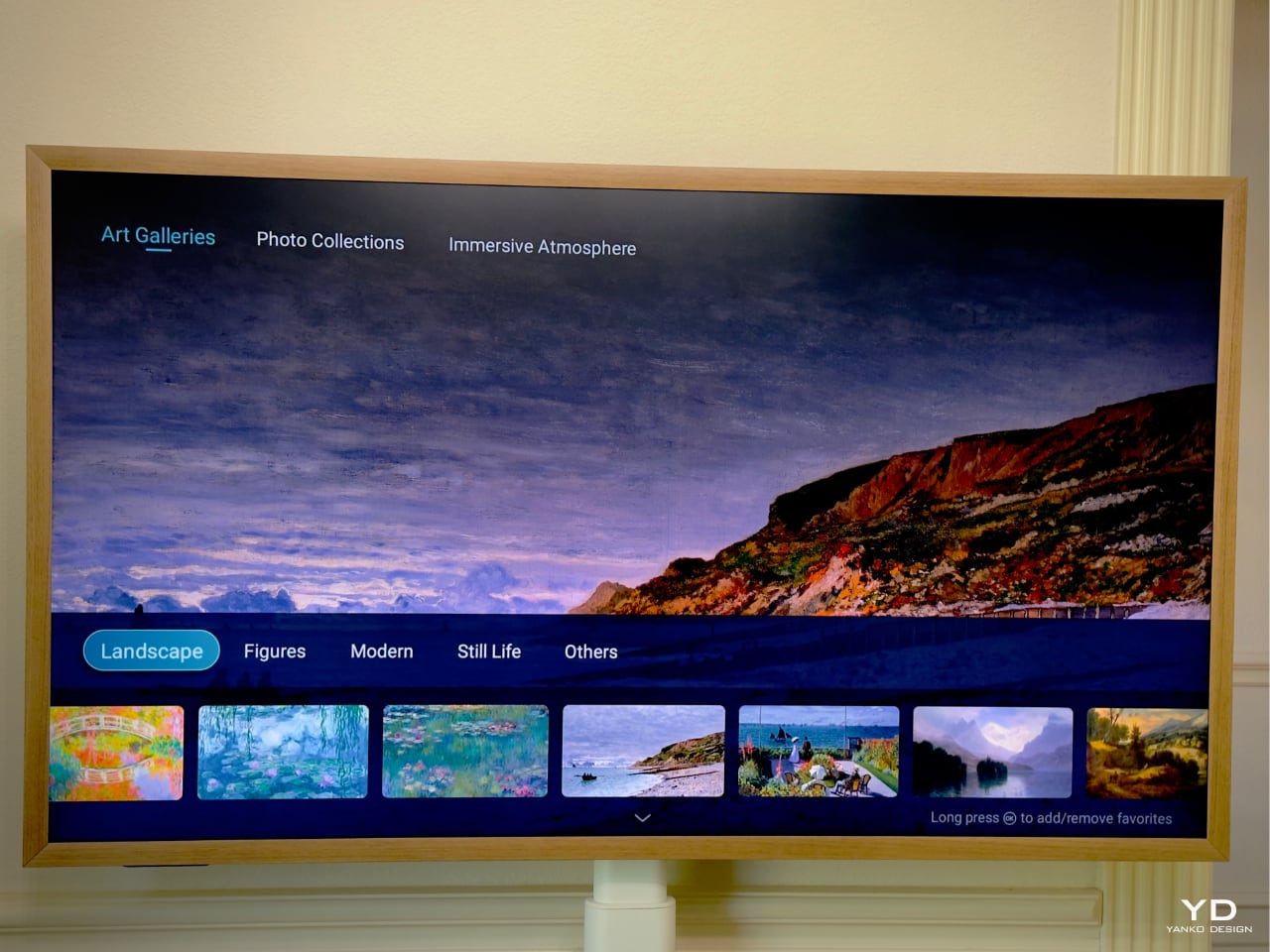
Design That Speaks Volumes
The CanvasTV doesn’t just display art; it is art. Hisense has clearly put thought into every aspect of its design. The TV features a slim bezel that focuses on the content, not the frame. It comes standard with a teak frame, but thanks to its magnetic design, you can easily swap it out to match your décor or mood. We love the light wood tones, which perfectly complement our sunroom’s natural aesthetic.
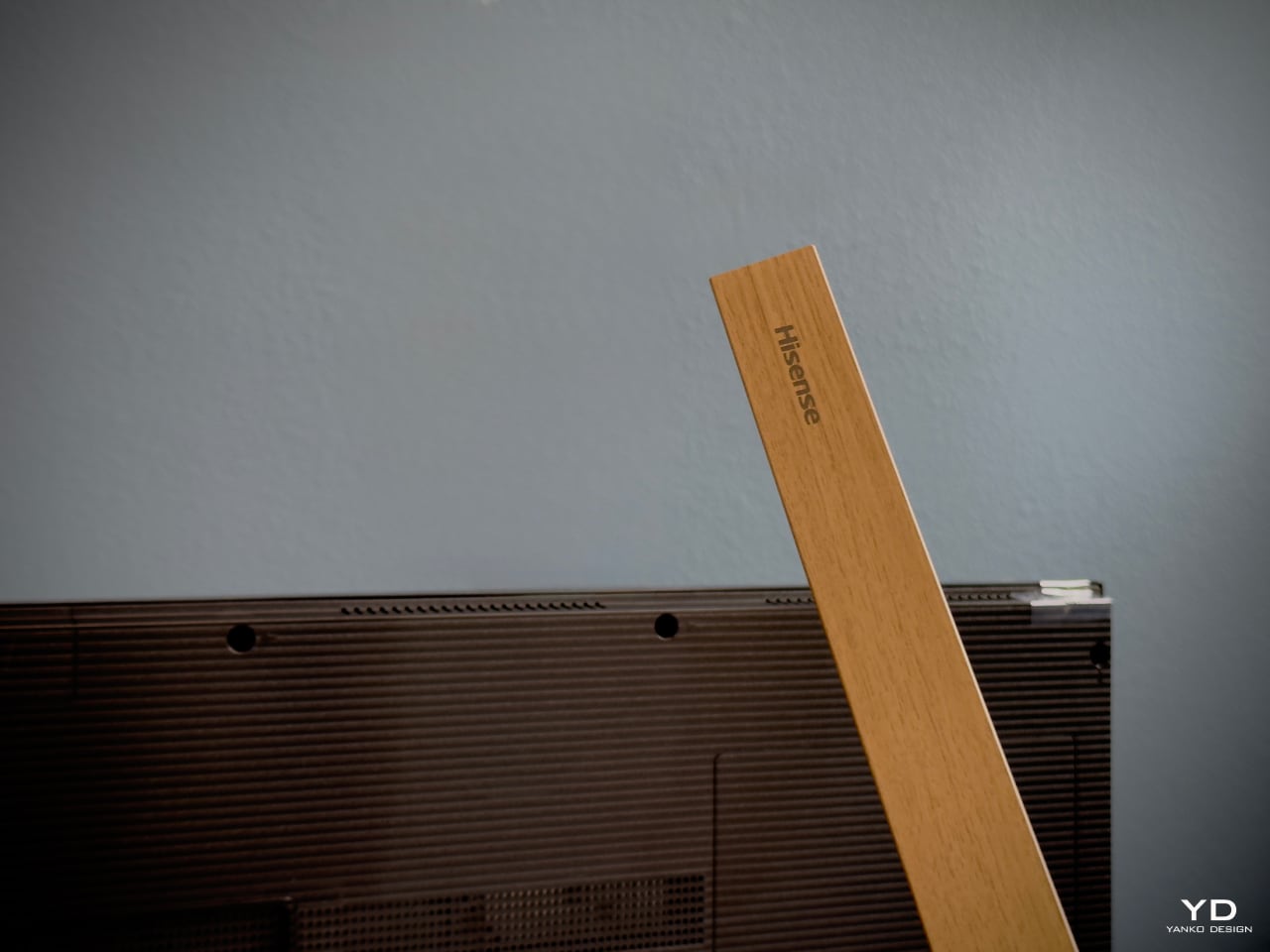
One of my favorite moments was seeing Claude Monet’s “Water Lilies” displayed on the screen. The soft blues, greens, and pinks seemed to come alive against the backdrop of our vibrant blue walls. This created a mesmerizing interplay of color that transformed the space and added a sense of tranquility and elegance.
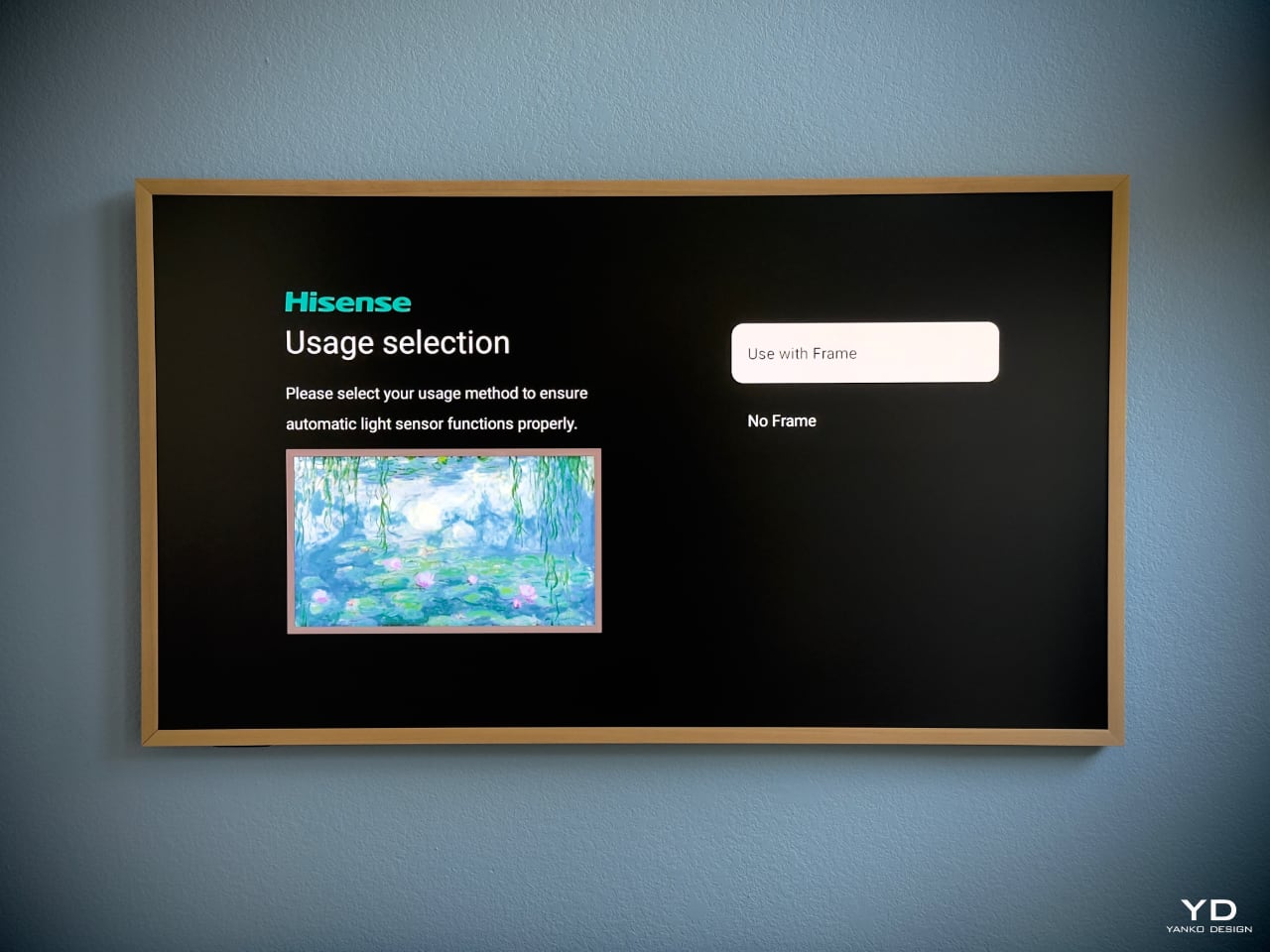
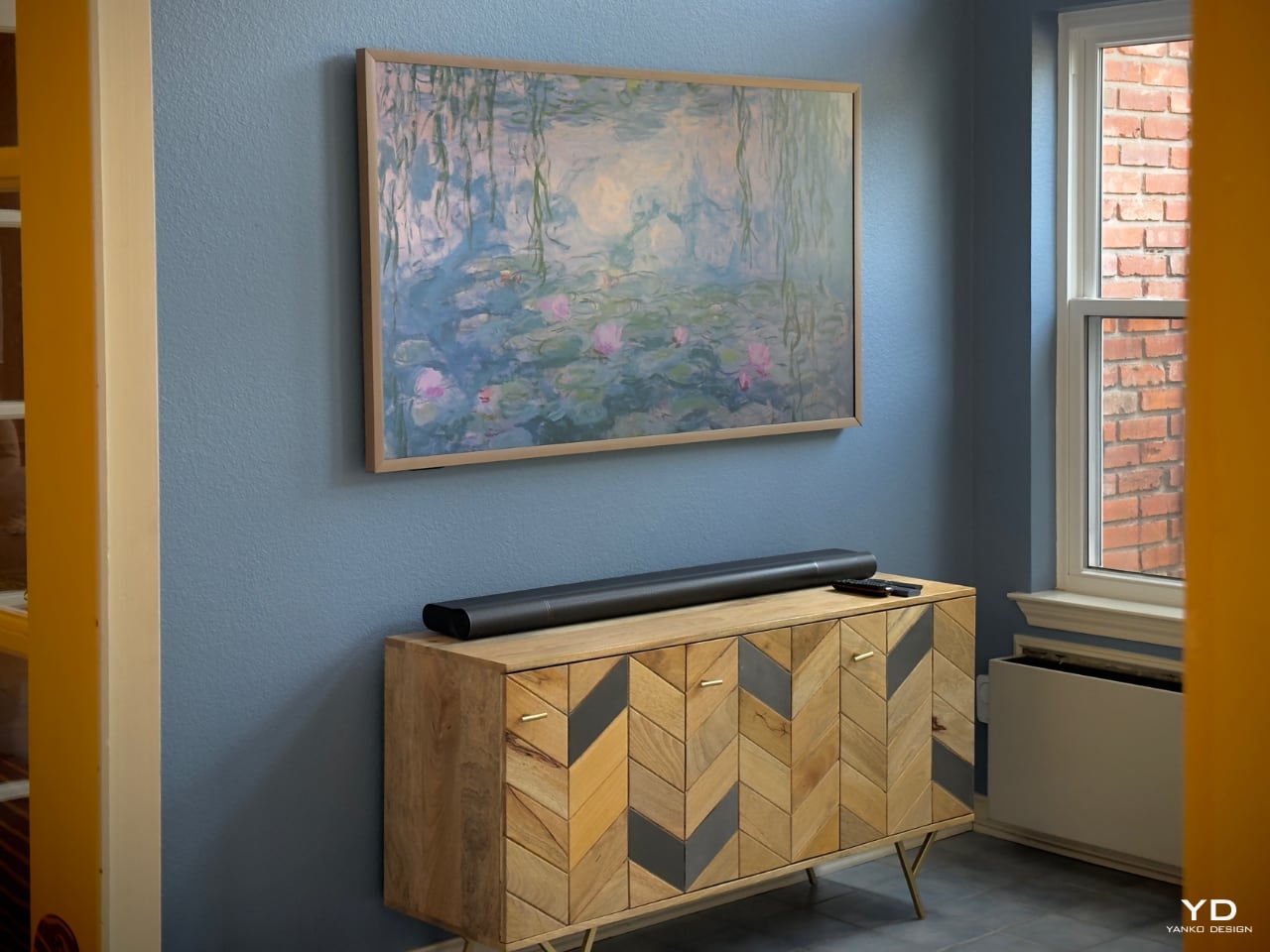
Beneath the TV, we placed a natural wood console that echoes the frame’s light wood tones. The simplicity of its design, with clean lines and earthy textures, ties the whole look together. The result is a harmonious blend that feels more like a curated art installation than just a TV setup.
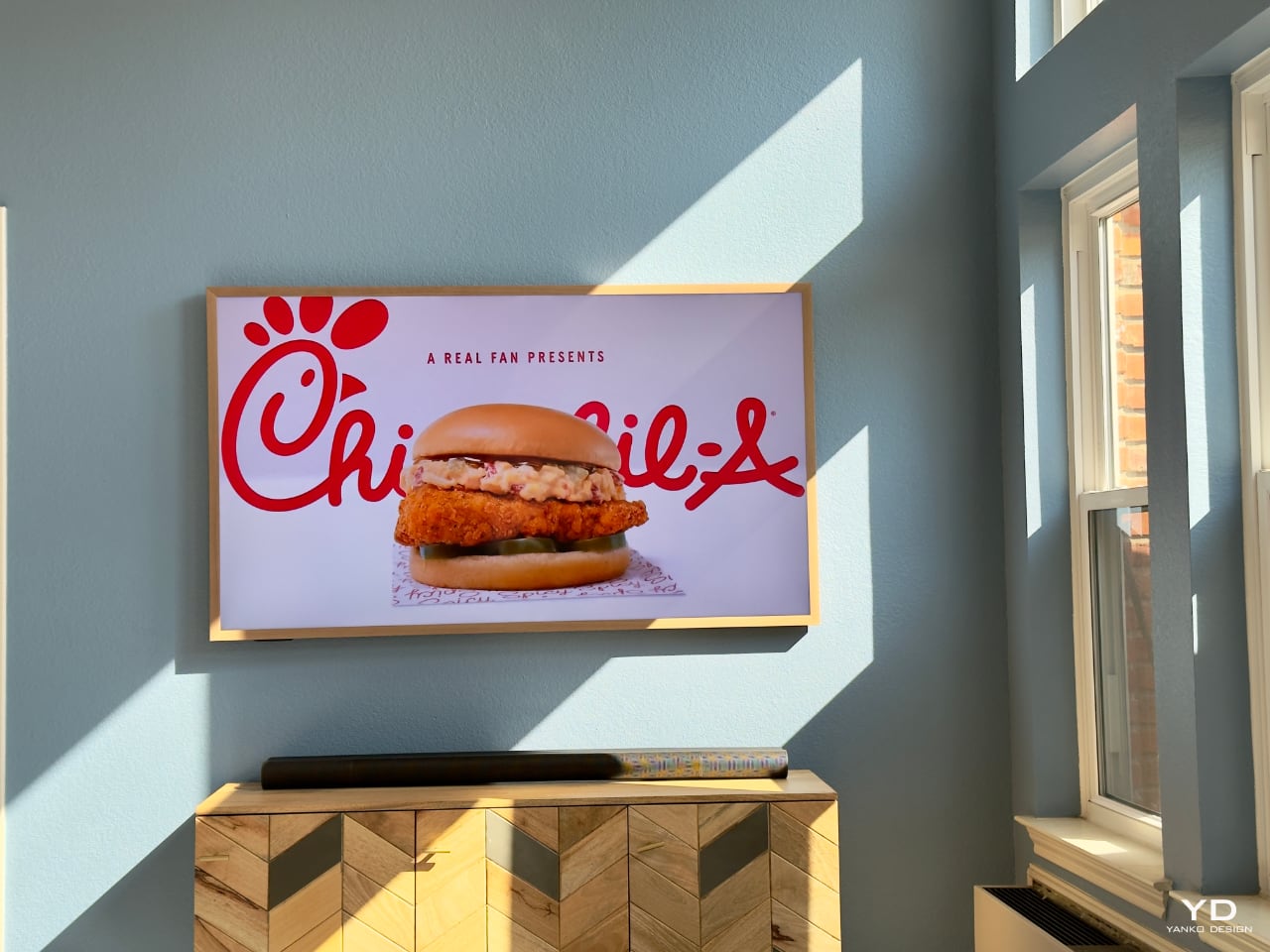
Versatility with the 55″ Model
While the 65″ CanvasTV found its permanent home in the sunroom, we decided to get adventurous with the 55″ model. Instead of mounting it, we opted for the mobile stand—a decision that has added a whole new layer of versatility to our home entertainment.
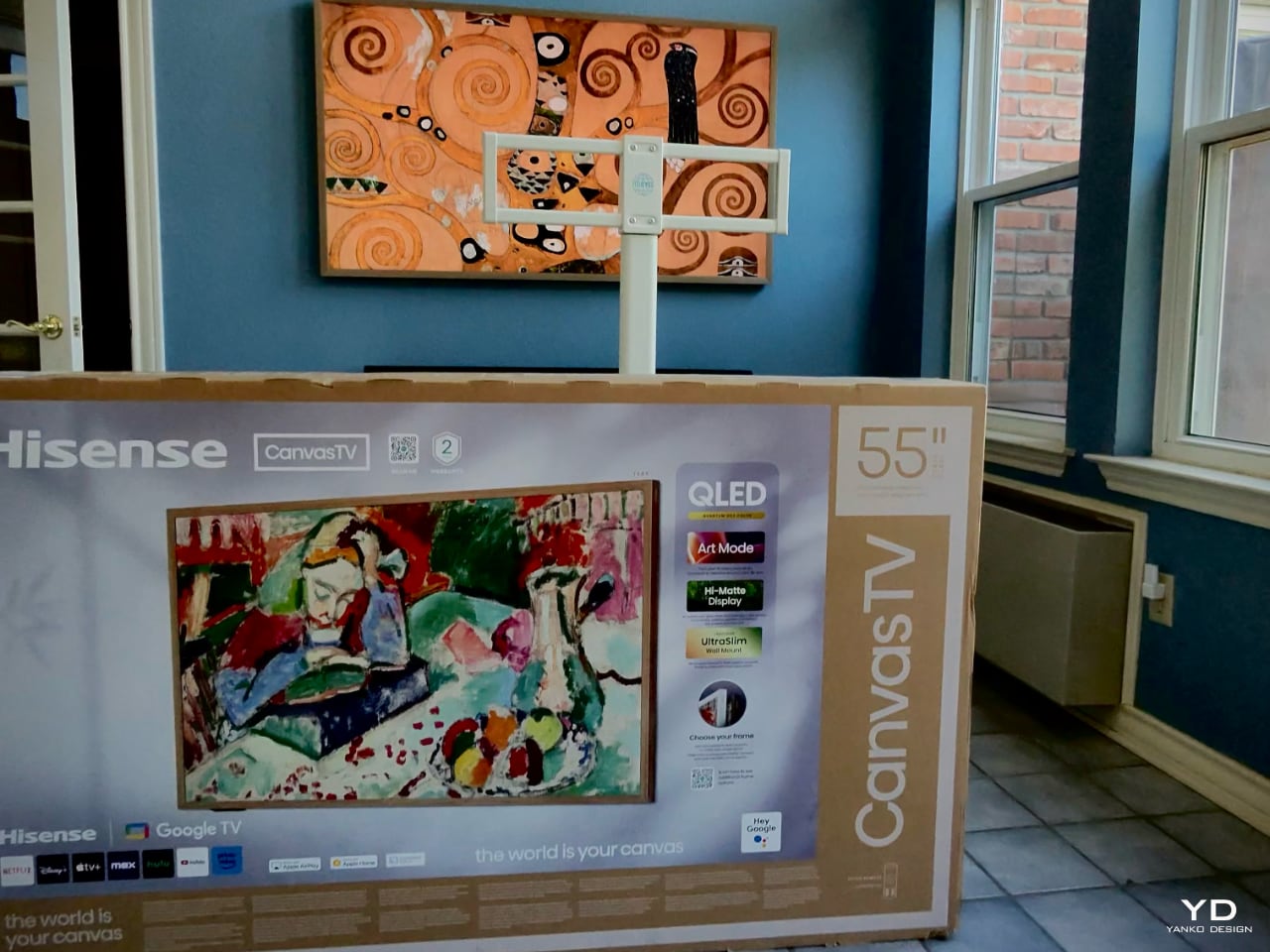
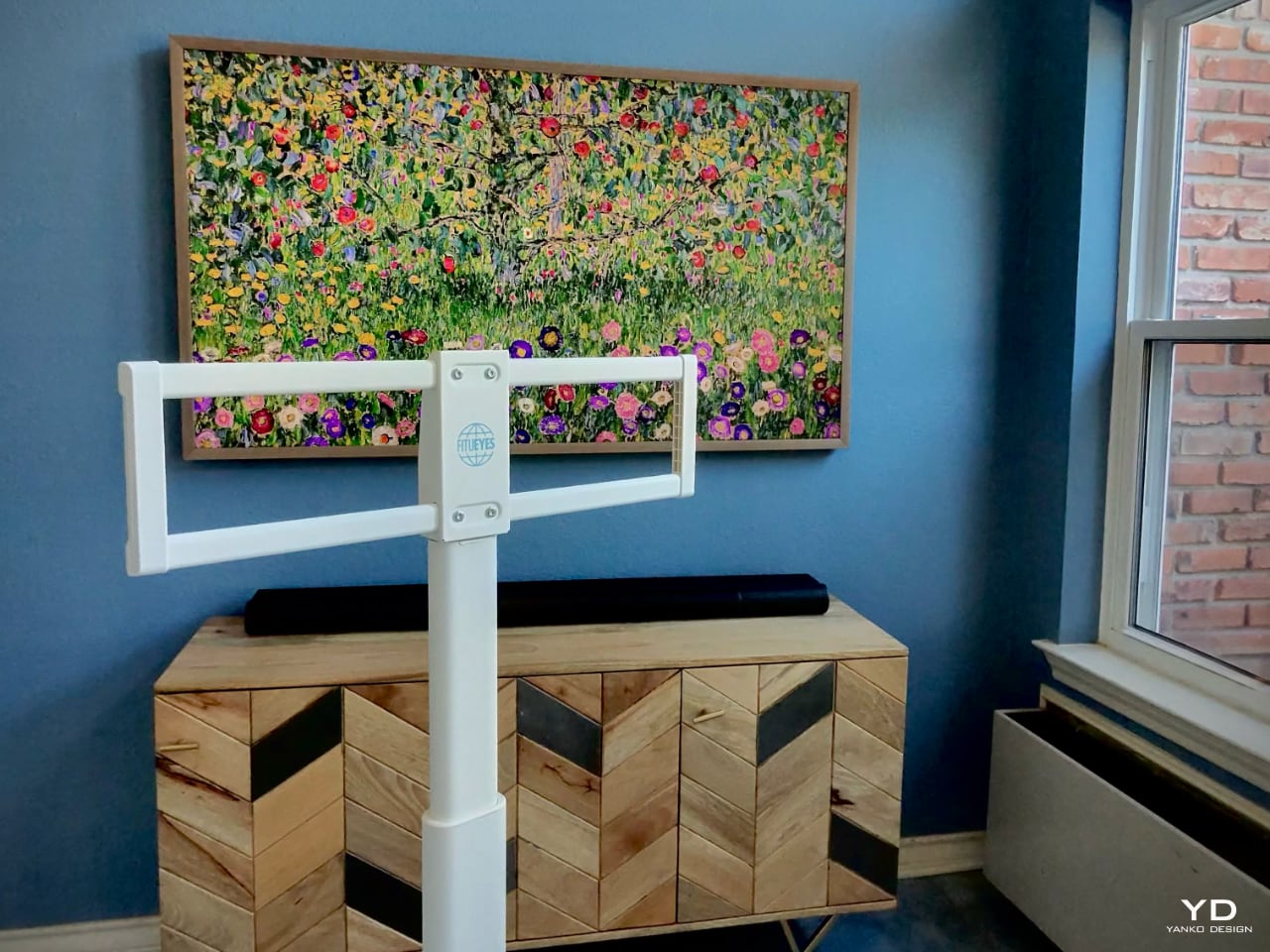
The mobile stand is a game-changer. Its clever design includes an integrated power outlet, reducing cable clutter and making it incredibly easy to move the TV from room to room. Need a screen in the kitchen for following a new recipe? Roll it in. Hosting friends in the dining room and want to display a slideshow of memories? Easy. Cozy movie night in the bedroom? Done.
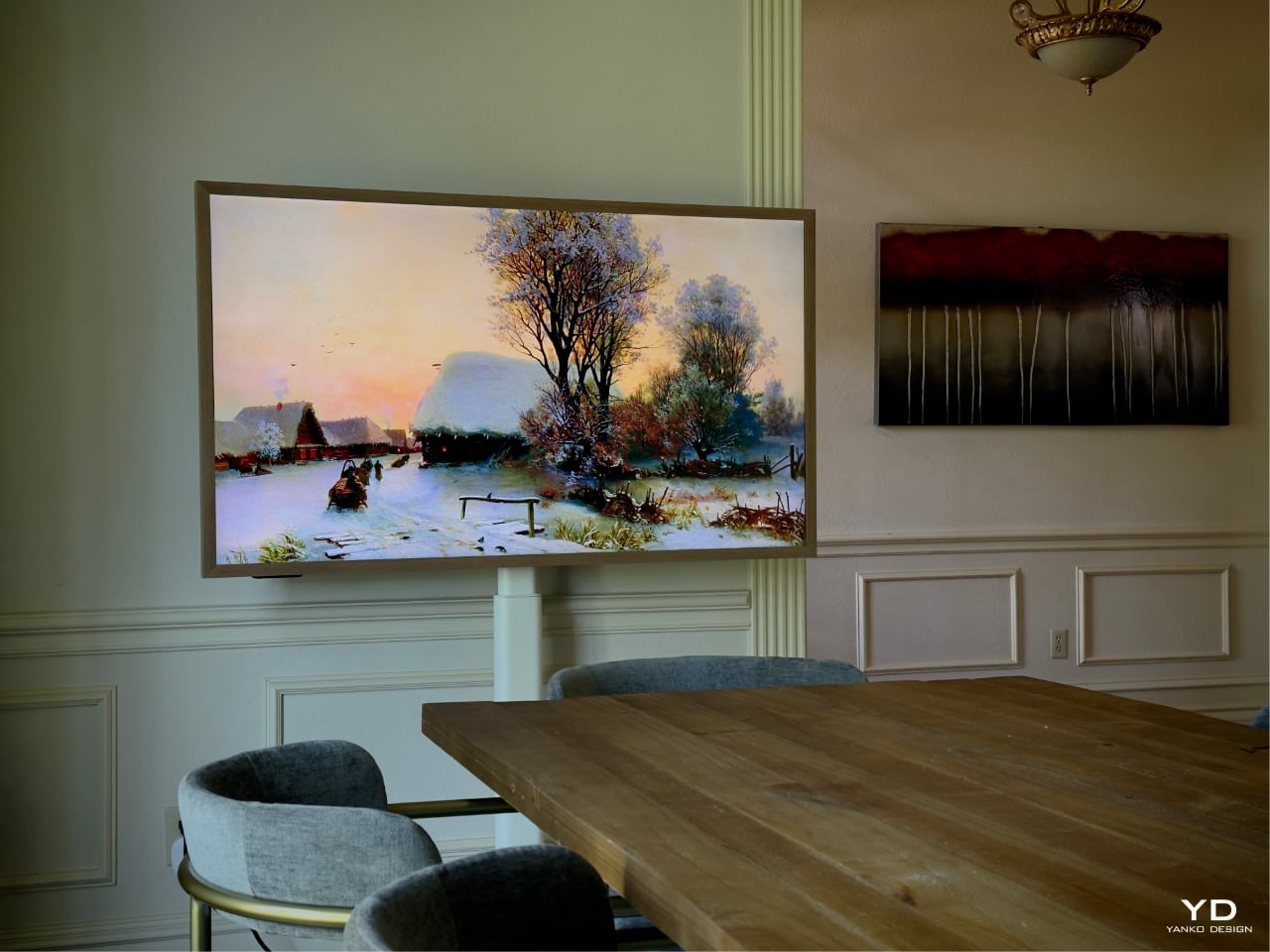
All the necessary ports—power, HDMI, and USB—are neatly integrated into the back of the TV. There’s no need for external boxes or messy cables, keeping the setup clean and elegant.
For families, this flexibility is a huge plus. Imagine being able to wheel the TV into the kids’ room for a special movie night or setting up an impromptu gaming session in any part of the house. It’s the convenience of a portable entertainment center without sacrificing style or quality.
Ergonomic Design and User Experience
The CanvasTV is designed with the user in mind. Wall mounting the 65″ model was straightforward, thanks to its lightweight build and slim profile. It sits flush against the wall, enhancing that art gallery feel.
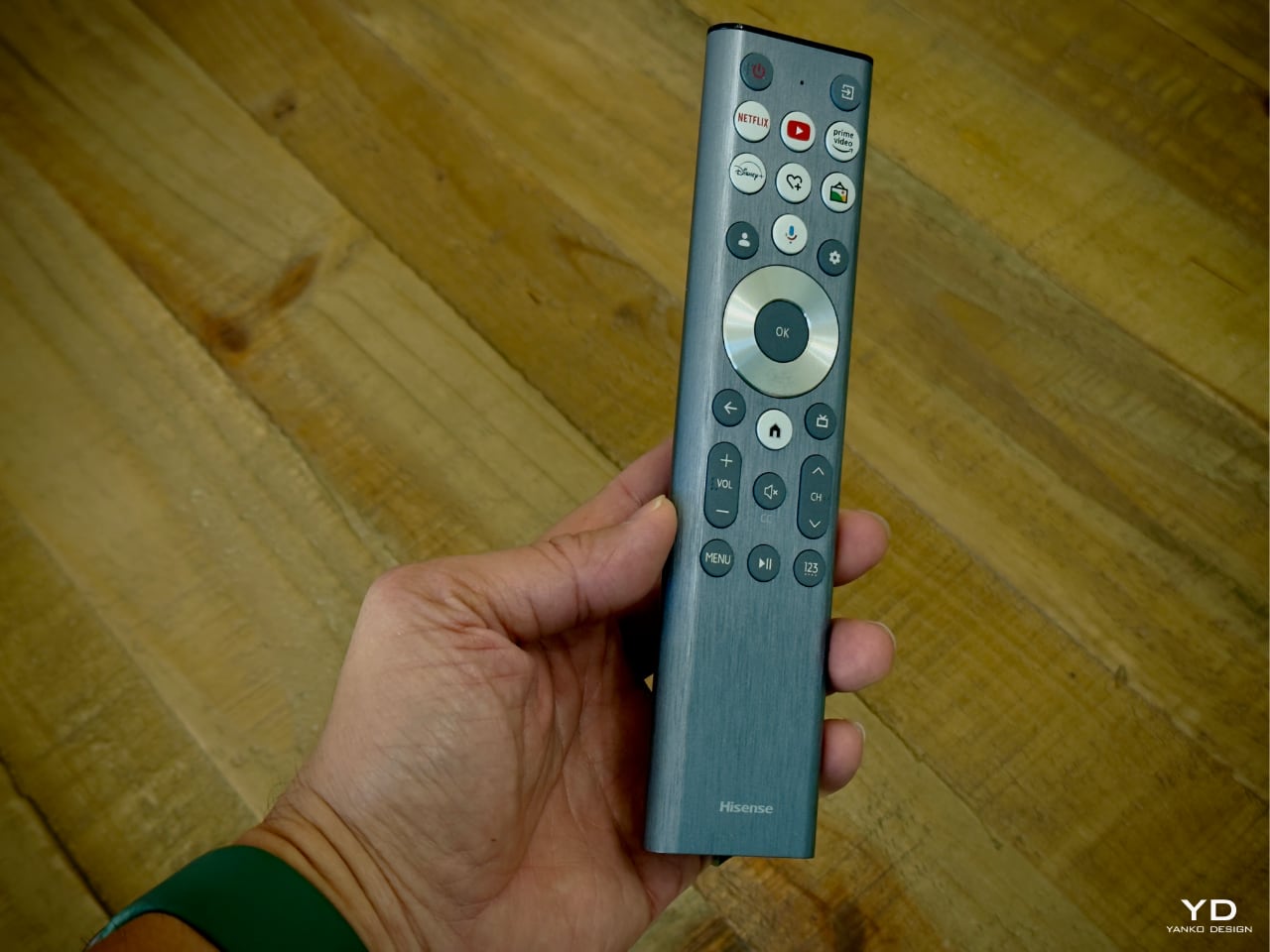
The remote control continues the minimalist theme. With its brushed metal finish, it feels substantial yet sleek in hand. The button layout is intuitive—quick-access buttons for popular streaming services like Netflix, YouTube, Prime Video, and Disney+ are right at your fingertips. The inclusion of voice control via Google Assistant adds an extra layer of convenience. We can navigate content, adjust settings, or even control other smart devices in our home with simple voice commands.
Performance: A Visual and Auditory Delight
Now, let’s talk about performance. The CanvasTV might not feature Mini-LED backlighting—a technology known for delivering deep blacks and high contrast—but it makes up for it in other ways. The matte display is amazing, especially in a room like ours where the entire back wall is glass and the sunrise shines directly into the space. The CanvasTV’s matte screen does a fantastic job, offering more than adequate brightness, even under direct sunlight.
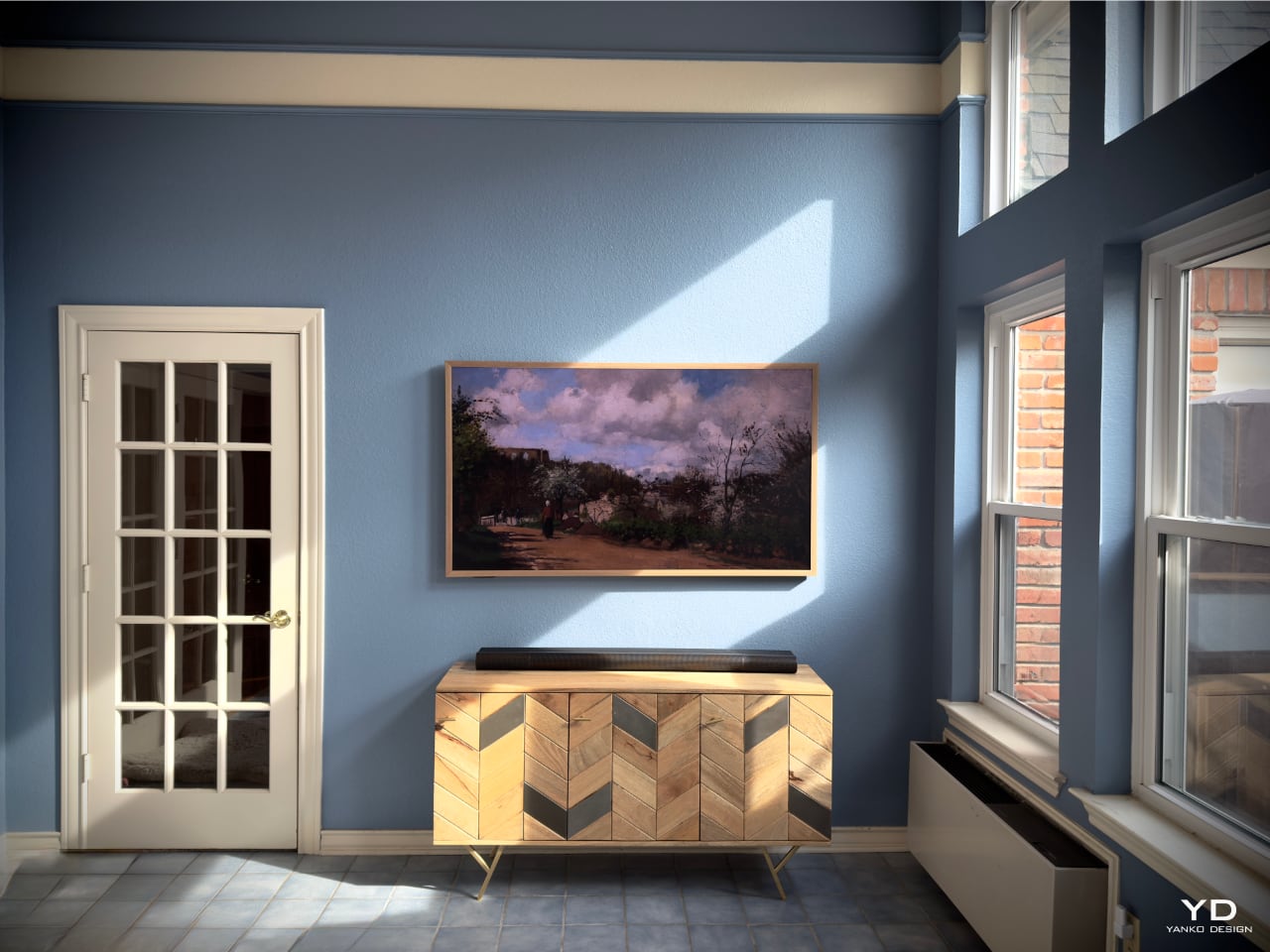
The matte display quite literally ‘eats up’ and swallows any shadow thrown at it—making the artwork look like real art instead of something viewed through a monitor. Add in the Quantum Dot (QLED) technology, and the colors are vibrant and true to life, enhancing everything from movies to artwork.
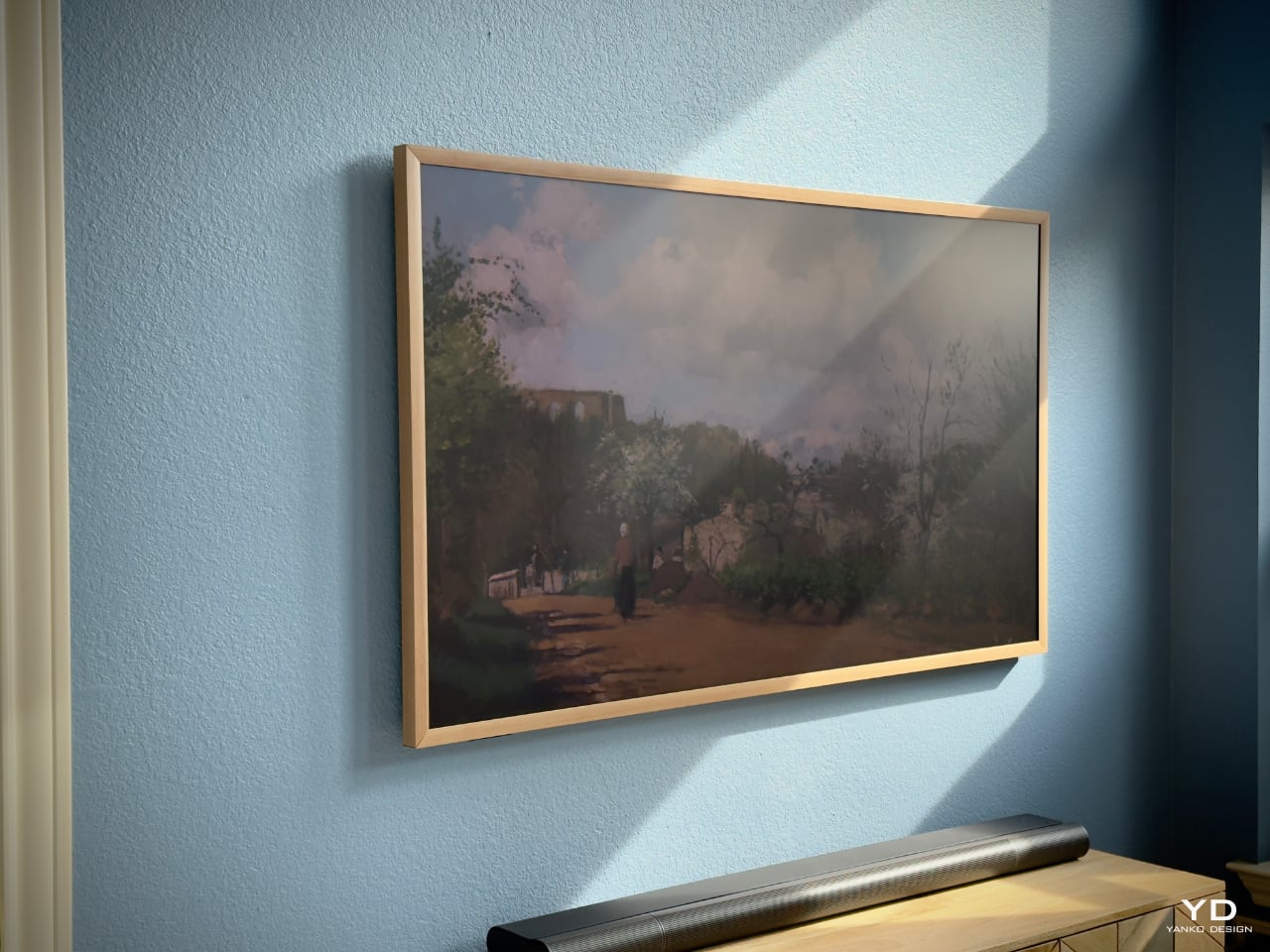
With a refresh rate of up to 144Hz, the TV handles fast-paced action scenes and gaming without breaking a sweat. We connected our gaming console, and the experience was smooth and immersive. The visuals were crisp, with no noticeable lag or motion blur.
The audio doesn’t disappoint, either. With Dolby Atmos support, the built-in speakers deliver sound that fills the room. Dialogue is clear, music is rich, and the overall audio experience complements the high-quality visuals. While audiophiles might prefer an external sound system, we found the integrated speakers to be more than sufficient for our needs.
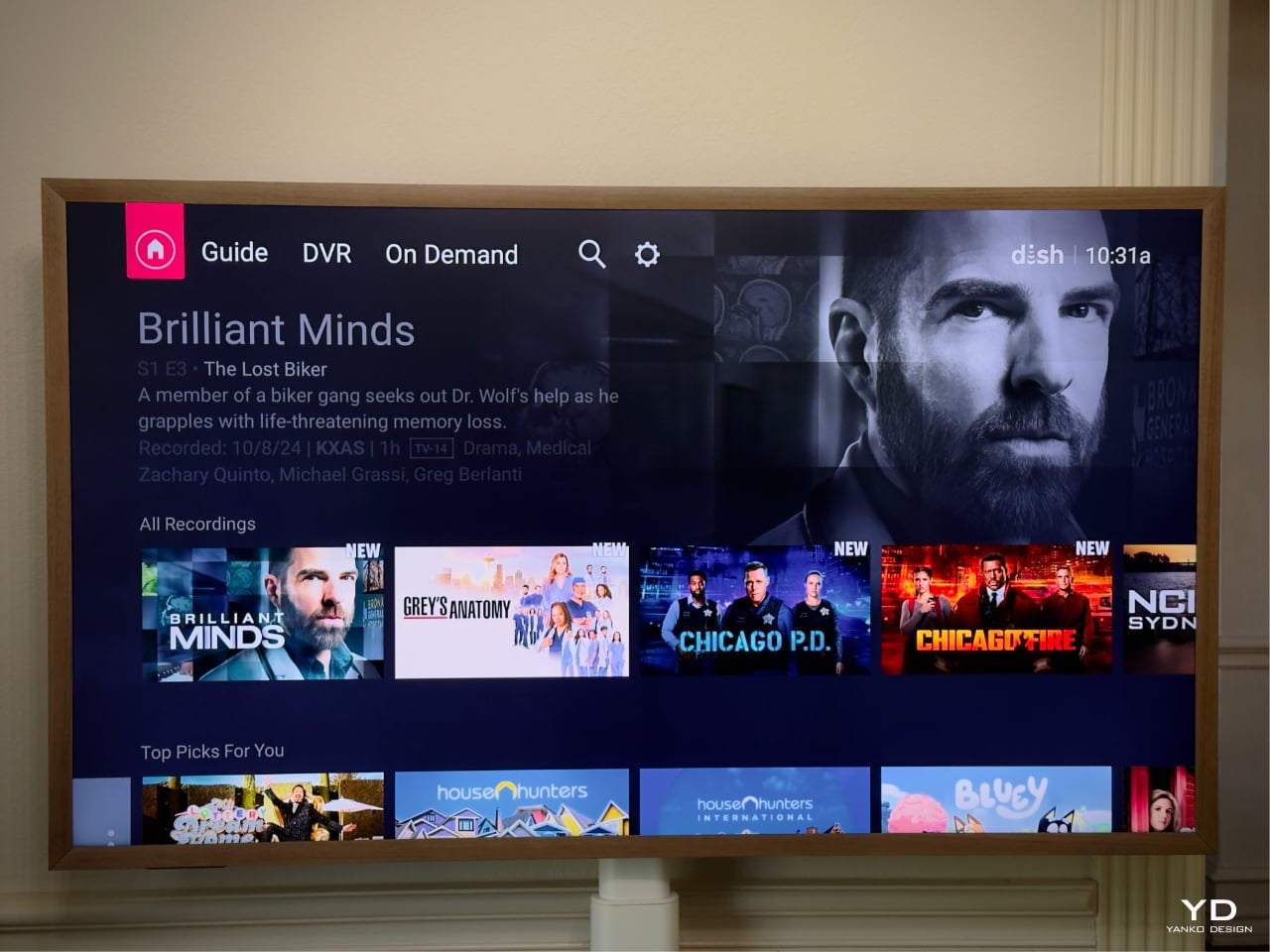
Navigating the TV’s interface is a breeze, thanks to the VIDAA U operating system. It’s clean, responsive, and doesn’t bog you down with unnecessary clutter. Integration with Google TV means easy access to all our favorite streaming services, including Dish Anywhere. If you’ve ever dealt with Dish Network, you know the hassle—wiring, coaxial cables, and setting up a box. With CanvasTV, it’s as simple as installing the Dish Anywhere app, and you’re good to go. The 55″ model on a mobile stand makes this even more convenient—art and entertainment on wheels, ready to roll into any room. Plus, support for Apple HomeKit and AirPlay 2 ensures seamless connectivity with our Apple devices.
Connecting my laptop and extending the use of CanvasTV as a second or third monitor makes life easier for meetings, streaming shows, and those long Zoom calls.
Sustainability Matters
Being eco-conscious is more important than ever, and we’re pleased to see that Hisense shares this value. The CanvasTV uses responsibly sourced wood certified by the Forest Stewardship Council (FSC), ensuring that materials meet high environmental and social standards.
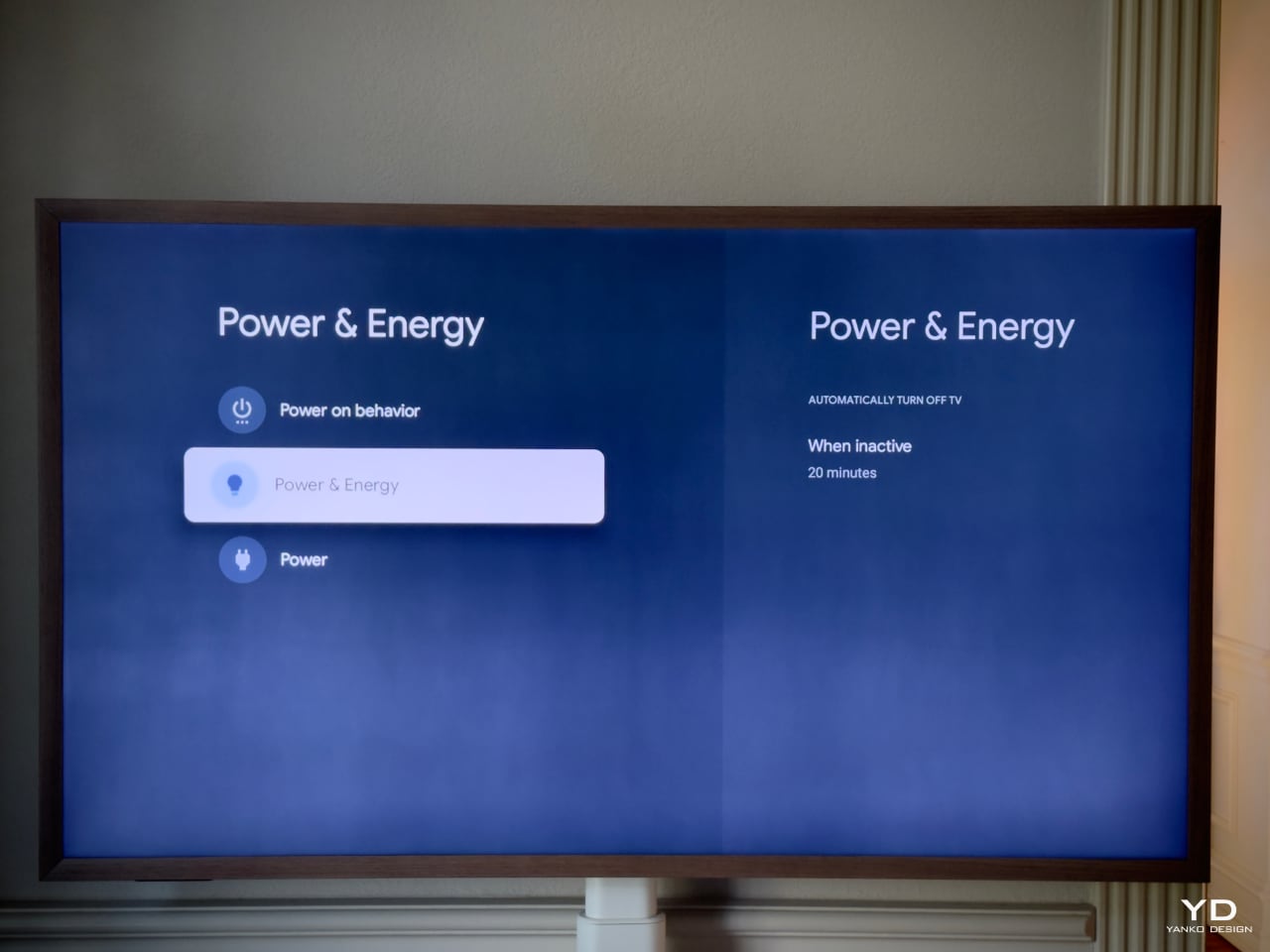
Energy efficiency is another highlight. The TV includes advanced power management features to minimize energy consumption during use and standby. It meets or exceeds international energy efficiency standards, which not only reduces our carbon footprint but also helps lower our electricity bill.
Even the packaging reflects Hisense’s commitment to sustainability. They use recyclable materials and minimize the use of plastics, reducing waste without compromising product protection during shipping.
Value That Hits the Sweet Spot
One of the most compelling aspects of CanvasTV is its value proposition. The current price for the 55″ CanvasTV at Best Buy is $850, making it an appealing entry point for those looking to bring this blend of technology and art into their homes without breaking the bank. The 65″ model, priced around $1,100, offers many of the premium features found in higher-priced competitors like Samsung’s The Frame or TCL’s Nxtframe, but at a more accessible price point.
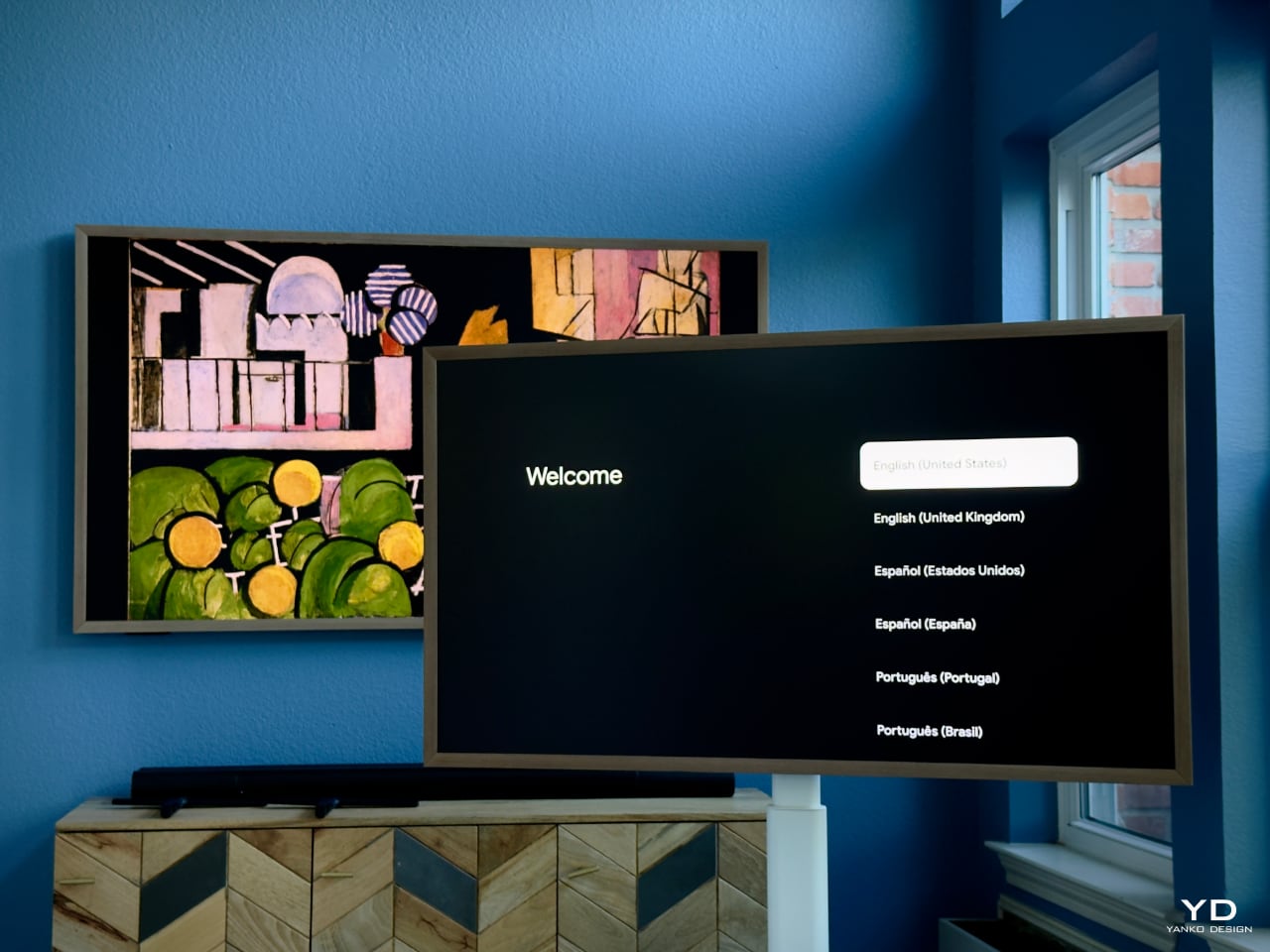
Including over 120 free pieces of curated art—without any subscription fees—is a significant bonus. Competitors often require monthly fees to access similar features. The ability to upload personal images at no extra cost adds another layer of personalization that enhances the overall value.
The TV’s compatibility with various smart home ecosystems—Google Voice, Google TV, Apple HomeKit, and AirPlay 2—makes it convenient for users across different platforms. The thoughtful design extends to every aspect of the user experience, highlighting Hisense’s focus on usability.
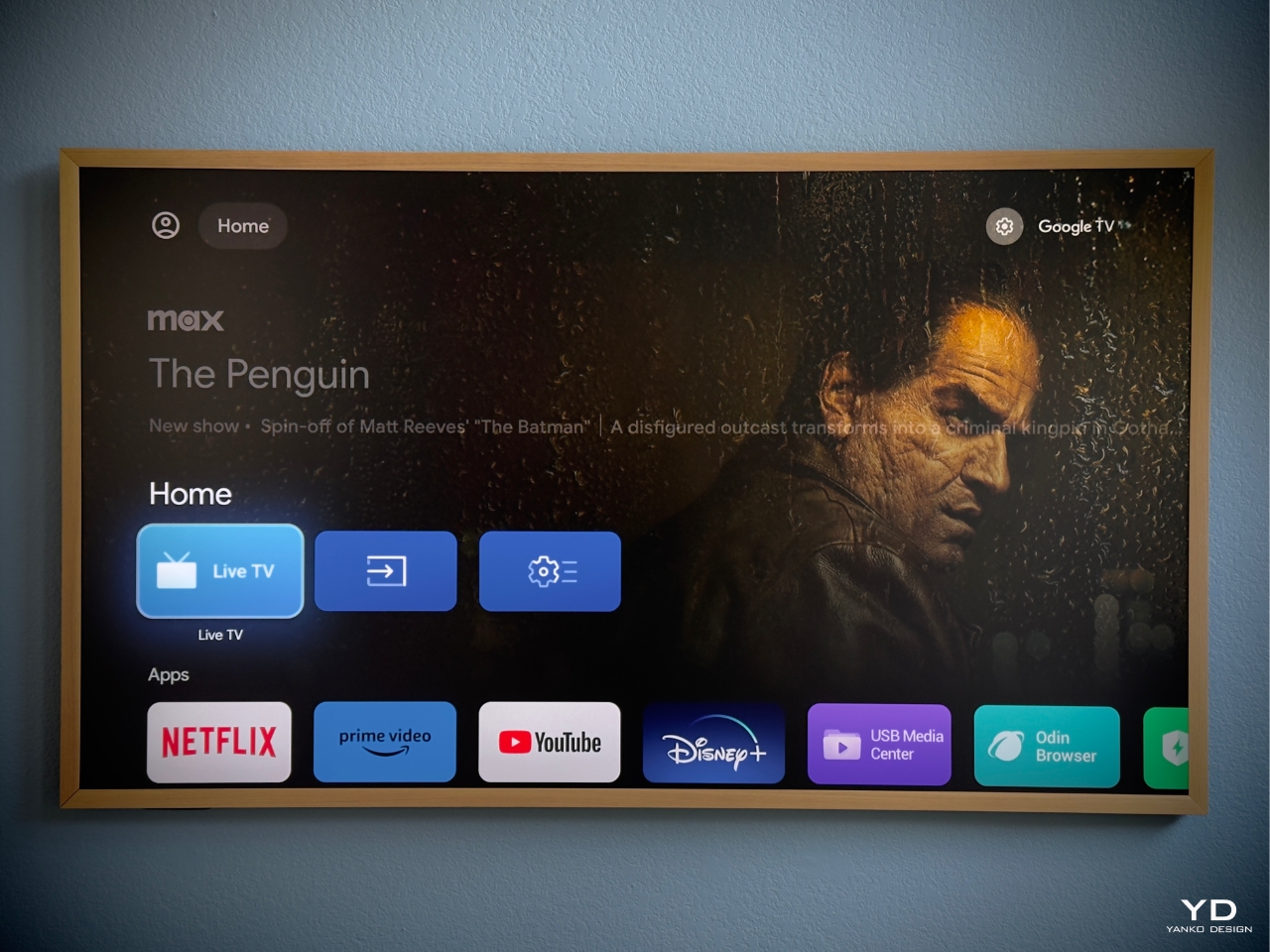
The versatile mounting options further enhance its utility. Whether you choose to wall-mount it for a sleek, integrated look or use the mobile stand for adaptable use throughout your home, the CanvasTV adapts to your lifestyle.
Final Thoughts: A Seamless Blend of Lifestyle and Technology
The Hisense CanvasTV has redefined our expectations of what a television can be. It’s a device for consuming content; it’s an integral part of our home’s aesthetic and functionality. From its stunning design and customizable art displays to its practical mobility and solid performance, it checks all the boxes.
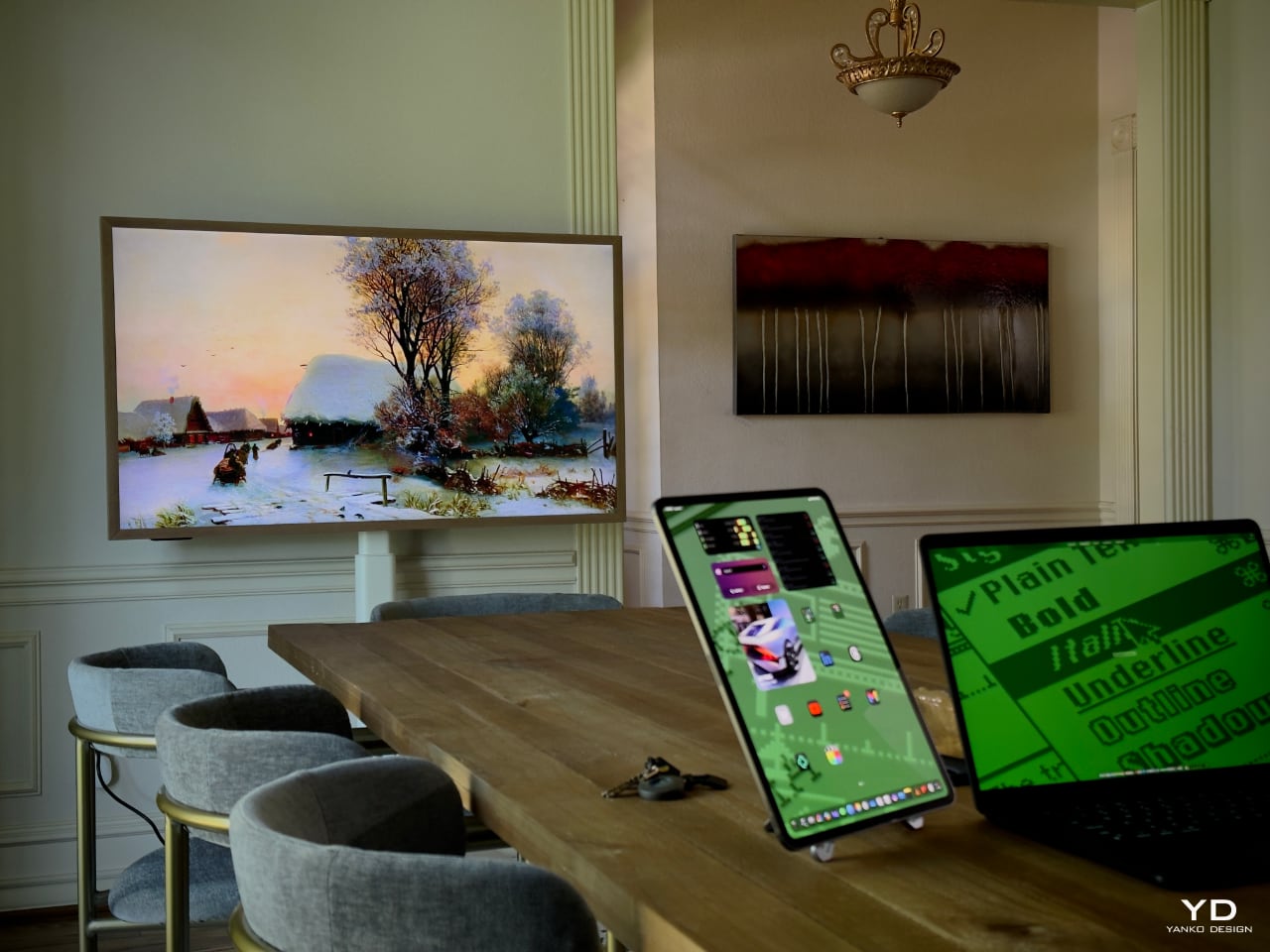
For anyone torn between wanting the latest technology and maintaining a stylish, inviting home, the CanvasTV offers the best of both worlds. It’s elevated our living space in ways we didn’t anticipate, and we couldn’t be happier with our choice.
Would We Recommend It? Absolutely.
If you’re in the market for a new TV that does it all, the Hisense CanvasTV deserves serious consideration. Its blend of art, design, and technology offers a unique experience that’s hard to find elsewhere, especially at this price point.
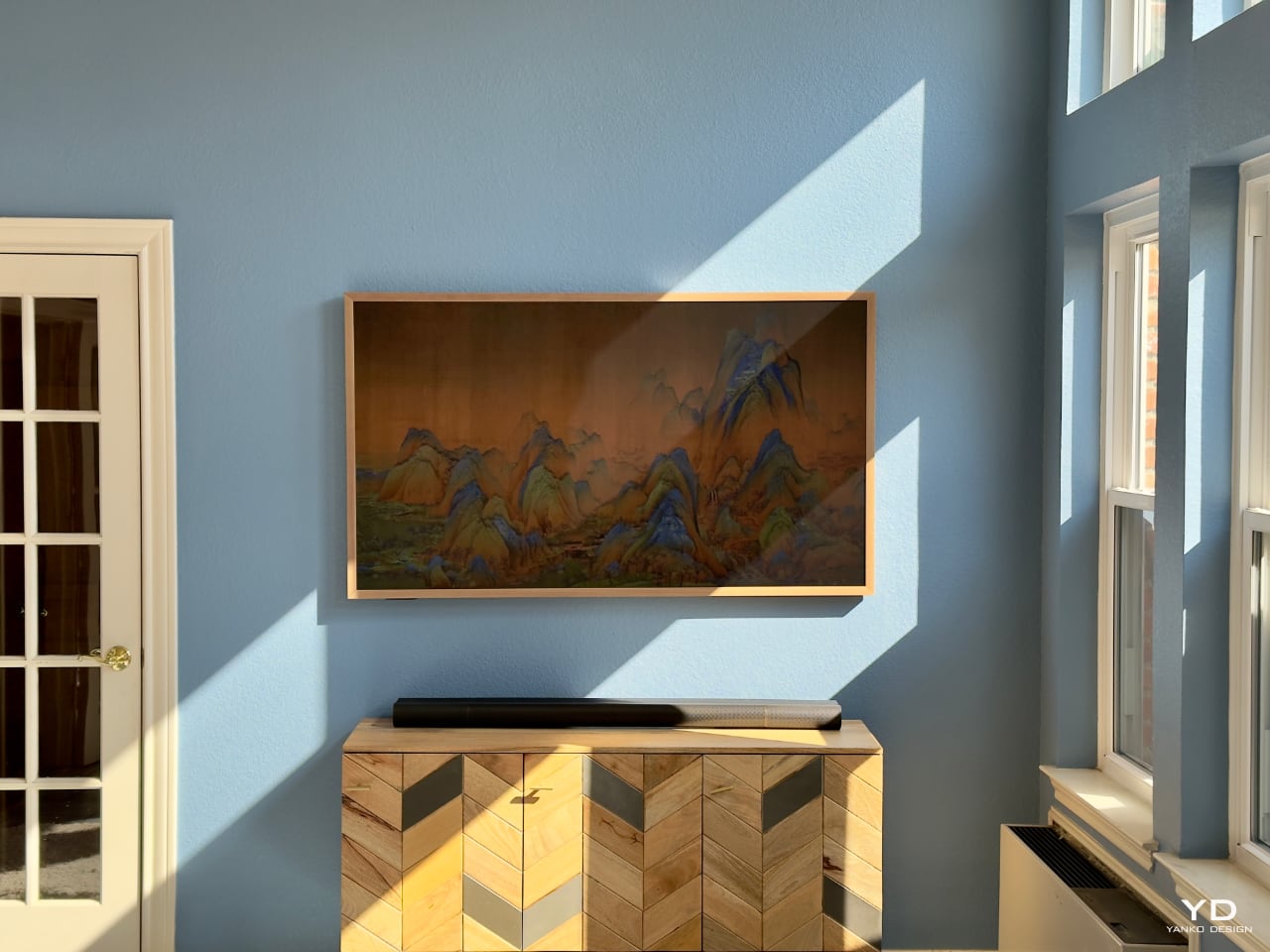
Whether you’re an art enthusiast, a tech lover, or someone who appreciates thoughtful design, this TV has something to offer. It’s become an integral part of our home entertainment setup; it’s a conversation piece, a mood setter, and, quite frankly, a joy to own.
Key Takeaways:
- Art Mode with 120+ Free Artworks: Transform your TV into a personal art gallery without extra costs.
- Sleek, Customizable Design: Slim profile and magnetic frames let you tailor the look to your home.
- Versatile Mounting Options: Choose between wall mounting or a mobile stand to suit your lifestyle.
- Solid Performance: Vibrant QLED display with 144Hz refresh rate and Dolby Atmos sound.
- Smart Home Integration: Compatible with Google Voice, Google TV, Apple HomeKit, and AirPlay 2.
- Eco-Friendly Features: Uses responsibly sourced materials and energy-efficient technology.
- Great Value: Offers premium features at a more accessible price compared to competitors.
The post Our Sunroom’s New Masterpiece: The Hisense CanvasTV Review first appeared on Yanko Design.
